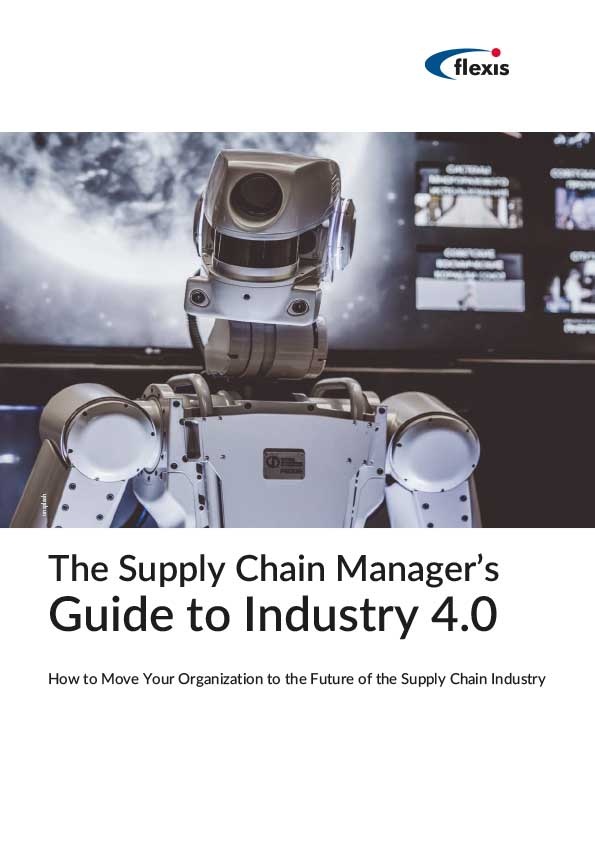4 Supply Chain Management Predictions for 2018
Brian Hoey - January 04, 2018

 To say that 2017 was an eventful year for Supply Chain Management would be an understatement. Global natural disasters and broad shifts in the world’s political climates introduced new levels of uncertainty into numerous value chains throughout the world. At the same time, the forward march of technology continued to change the way that business is done, offering new and novel solutions to problems of data and visibility that have long plagued manufacturers in particular. Though 2018 is still new, we can be confident that it will bring just as many changes as 2017 did. No one can see the future with perfect clarity, but we can make educated guesses as to what lies ahead for supply chain managers in the new year. Here are our top four predictions for supply chain management in 2018.
To say that 2017 was an eventful year for Supply Chain Management would be an understatement. Global natural disasters and broad shifts in the world’s political climates introduced new levels of uncertainty into numerous value chains throughout the world. At the same time, the forward march of technology continued to change the way that business is done, offering new and novel solutions to problems of data and visibility that have long plagued manufacturers in particular. Though 2018 is still new, we can be confident that it will bring just as many changes as 2017 did. No one can see the future with perfect clarity, but we can make educated guesses as to what lies ahead for supply chain managers in the new year. Here are our top four predictions for supply chain management in 2018.1. New Risks, New Rewards
Between the rash of hurricanes in the Caribbean and the devastation of California’s ongoing wildfires, 2017 proved to be a year of increased disruption and uncertainty for the supply chain. Unfortunately, events like these are likely to become the norm going forward, leaving supply chain managers with the sometimes-onerous task of building and growing systems that are not just reactive, but proactive and capable of mitigating the effects of uncertainty. Combine the threat of the elements with the changeable nature of global politics and trade agreements, a realm in which European and Asian markets are making rapid developments, and 2018 is poised to offer the same challenging uncertainty that changed the nature of supply chain risk in 2017.
Companies will need to employ a bold, future-oriented approach to managing inbound supply and transport logistics, with an emphasis on predicting their needs and their customer’s needs far in advance while developing contingency plans that account for calculated risks. No one can predict the future, but supply chain managers can take an approach to supply chain planning and risk that is flexible, adaptable, and transparent enough to cope with changing circumstances. By addressing supply chain risk in this way, businesses can do more than just weather disruptions: they can turn smart risk management into a significant value added proposition.
2. Rise of the Lean Supply Chain
As the need for smarter, more predictive risk management grows, the high-risk realities of modern business will also push more and more companies to embrace a lean supply chain. Many companies believe that their purchasing needs, to say nothing of their inventory management, are so complex that they cannot be further streamlined, but this belief often comes more from siloized decision-making and opaque value chains than from truly insurmountable complexity. To compete in a marketplace that increasingly requires a high degree of adaptability, manufacturers and others will have to adopt approaches that can:
- Identify areas of waste and inefficiency in manufacturing and other processes.
- Optimize scheduling, inventory usage, routing, and procurement in order to minimize non-value added elements.
- Uncover decision-making siloes and information gaps that are preventing the most efficient possible use of time, money, and resources.
I.e. businesses will be forced by increasingly volatile conditions to work toward a lean supply chain. For many, the first step toward a lean supply chain will be building more transparent processes that ensure that stakeholders have access to necessary information about vendors, procurement, inventory, manufacturing lines, and other key areas.
3. Increased Digitalization
Now even more than in 2017, it feels like industry is finally making good on the technological promises of the last decade. As factories in Europe, China, and elsewhere work toward a common vision for Industry 4.0, manufacturers are increasingly transitioning to smarter production facilities that rely on Internet of Things devices, smart sensors, cloud-based systems, and other connectivity-enhancing elements to help promote a more data-driven approach to the supply chain. Expect this digitalization trend to continue throughout 2018, with a focus on optimizing manufacturing, shipping, and other areas through advanced supply chain analytics. For companies that are able to avail themselves of the tools they need for taking advantage of increased interconnectivity and interoperability throughout warehouses or across factory floors, the era of supply chain analytics will make possible a host of competitive advantages, including:
- More accurate forecasting.
- Optimization of complex manufacturing processes.
- More thorough, insightful analysis for improved decision-making across tactical, operational, and strategic planning.
- Increased clarity, throughput, and customer satisfaction.
4. Greater Supply Chain Visibility/Long Tail Integration
If there is an over-arching theme to these predictions, it’s that, in terms of supply chain management, 2018 will be about bridging the gap between expectations and reality. As factories get smarter and supply chains get leaner, the obscure no-man’s-land between planning and execution should begin to vanish. Supply chain analytics will develop a symbiotic relationship with supply chain planning, a relationship that should enable planners to have a more holistic view of their entire network, from suppliers to distributors and everything in between. Much of the outside conversation about supply chain visibility has been specific to particular products types, but the value of increasing visibility extends to critical business functions.
By better integrating the long tail of the supply chain, by improving overall clarity and visibility within one’s operations, and by paving the way for improved connectivity and collaboration, 2018’s most savvy companies can make better, faster decisions in a fast-moving marketplace.
LATEST POSTS
- Understand Circular Economy in The Manufacturing Industry
- How Can Industry 4.0 IT Integration Be Achieved Smoothly?
- The Significance of Order Sequencing in Discrete Manufacturing
- How to improve your Supply Chain Management: The Power of Control Towers
- Optimizing Human Resource Scheduling in Manufacturing: A Technological Approach



